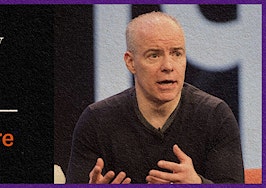Long-term rates have continued to slide down in the second week since the Fed raised the overnight cost of money. The 10-year T-note has moved from 2.62 percent to 2.40 percent, taking mortgages from just under 4.50 percent back to 4.25 percent.
A move like this is not unusual nor a trend change, and it reflects neither current political entertainment nor the economy. It is just a pause on the way to the Fed’s next hike, as the economy is doing fine. Politics may have some effect on economic prospects and long-term rates, but that will be weeks to months ahead.

The 10-year T-note in the last six months. For five months and counting it’s remained in the same, narrow range. The fading of stimulus dreams is holding rates down, but the Fed is still coming.
The Fed’s intentions show through in the 2-year T-note and its trading relative to the 10- year: 10s fell 22 basis points (bps = one one-hundredth of a percent), but the 2s only fell 14 bps.

The 2-year Treasury, also six months back. It has dipped in the last two weeks, but note that it has not returned to the prior trading range.
Gnats’ whiskers as yet, but it’s worth watching every week ahead. A “flattening yield curve,” the spread between the 2-year and 10-year narrowing is a common sign that the Fed is overdoing its hikes.
Take note that the bond market is distorted: The yield on 10-years (and mortgages) is suppressed by the European Central Bank (ECB) and Bank of Japan (BoJ) still buying IOUs in huge volume. If those central banks stop, so will the downward pull on our rates.
Oil, inflation pressure and long-term rates
Oil is also pulling rates down this week. In March, oil was down from $55 per bbl close to the one-year low at $47 per bbl. As always, there’s no telling how far down the slippery stuff can ooze, but this drop may kill the Saudi effort to re-cartel. And it removes inflation pressure from the Fed — so much so that political pressure may grow to hold off tightening.

First quarter GDP will arrive a little north of 1 percent but is misleading. Centerline growth has upshifted to 2.0-2.5 percent.
Facing inflation or not, the Fed is clearly determined to normalize, and not just when it comes to the cost of money. Every week brings a new comment indicating urgency to unload the extra $4 trillion in bonds on the Fed’s balance sheet.

The surge in the ECRI has stopped for the moment, partly because of its reliance on the booming, and now stumbling, stock market as indicator. But its underlying strength is strong.
This week it was Dallas Fed president Robert Kaplan, one of the skilled centrists saying that when it’s time, the Fed should unload both its Treasury and MBS (mortgage-backed security) excess.
Unloading may begin before the end of 2018, so long as the economy is on 2 percent growth track, and will push up long-term rates no matter what is going on at foreign central banks.
Politics, health care and their eventual market impact
Meanwhile, U.S. politics have changed, but in a way that you’ll hear only from people who have lived as adults through the last 50 years of transformation, and who in their youth saw firsthand how we were before.
Both parties have fractured into extreme and moderate wings and are no longer able to function as unified parties.
To function, multi-party proportional governments must overcome the paralytic effect of radical minority parties, and centrist parties do so by banding together in compromise. The U.S. used to do that, too. On July 2, 1964, the Civil Rights Act passed the House, 289 to 126.
The bill could succeed only by the center reaching across the aisle: 153 Democrats and 136 Republicans in favor, 91 Democrats (Dixiecrats) and 35 Republicans opposed. Today, to get anything done, moderate Republicans and Democrats will have to push aside each party’s radicals.
Neither party shows any sign of doing so, no matter who is president.
Everybody out here at the wrong end of the D.C. telescope knows what’s wrong with health care: It costs too much. Don Vito Corleone should have had a racket as good as health care.
One party pretends that market forces will fix things, but everyone out here knows that the only competition in health care is to see who can raise prices faster. The other party finds all solutions in bigger government, but also refuses to pull the plug on grotesque medical profiteering, or to be accountable for making big government function.
Markets here and worldwide have gotten used to U.S. federal gridlock. However, we are cruising along by consuming old political capital and adding none new. The price for partisan paralysis will be paid one day in markets.
Lou Barnes is a mortgage broker based in Boulder, Colorado. He can be reached at lbarnes@pmglending.com.












